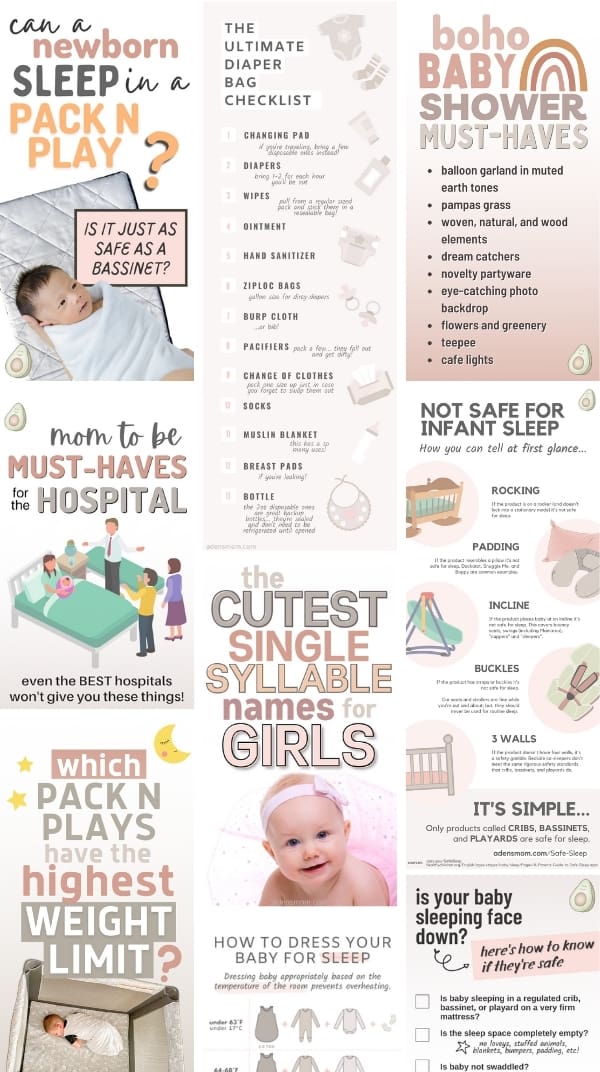A complete guide to safely keeping your baby warm at night without blankets
Baby, it’s cold outside…
…but is it cold inside?
The very first thing to know about keeping a baby warm at night is that you should dress them for sleep based on the temperature of the room, not the temperature outside.
I’m going to give you a great chart for this in just a moment!
The second thing to know is how to check if your baby is warm or cold. Certain parts of the body might feel cold, but this can be deceiving!
Get ready for some simple, evidence-based tips for how to keep a baby warm at night—while insuring they don’t overheat.
Table of Contents
- How to dress your baby for sleep
- Is it safe to use a swaddle blanket to keep baby warm?
- How to keep baby warm at night without swaddling
- How to keep baby’s hands and feet warm at night
- How to keep baby’s head warm at night
- How to keep your baby from overheating during sleep
- FAQs about how to keep baby warm at night
There may be affiliate links in this post. Read this disclosure policy to learn more.
PIN FOR LATER
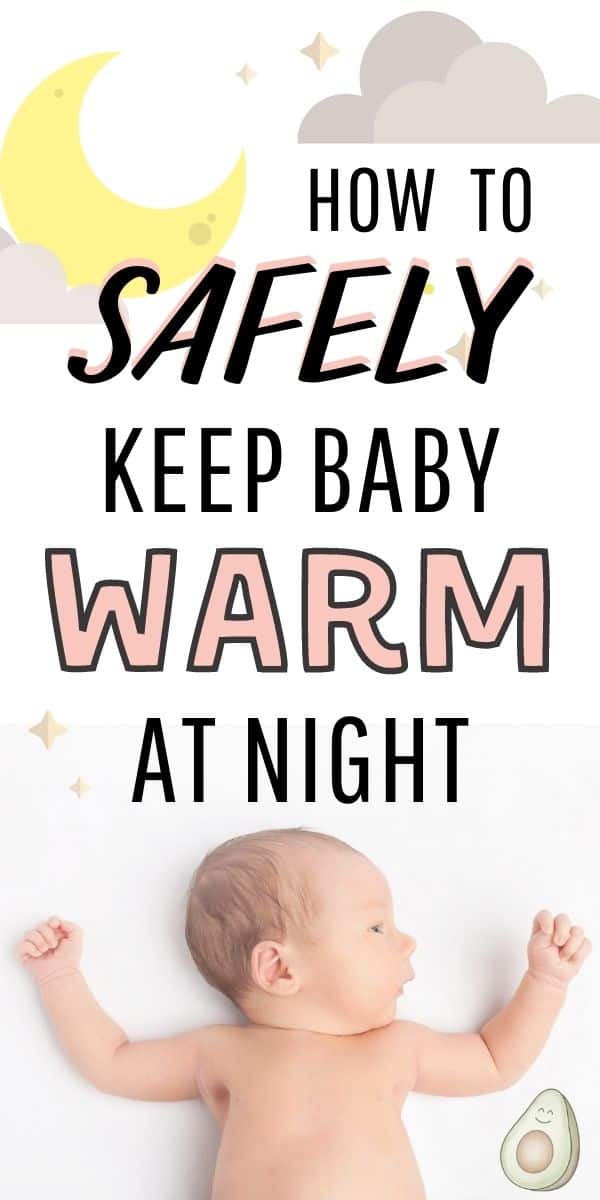
How to dress your baby for sleep
It can be hard to know what your baby should wear under a swaddle or sleep sack.
On one hand, you want to keep their tiny bodies warm, but on the other, it’s important to avoid overheating.
There are 3 simple methods to determine how warmly to dress your baby for sleep.
They tend to work best when used in conjunction.
- The AAP’s “1 layer more” guideline
- Layering based on the temperature of the room
- Adjusting based on your baby’s core temperature
Let’s break these down…
 The AAP’s “1 layer more” guideline
The AAP’s “1 layer more” guideline
The first way to determine how to keep a baby warm at night is to follow the American Academy of Pediatrics‘ rule of thumb:
“In general, infants should be dressed appropriately for the environment, with no greater than 1 layer more than an adult would wear to be comfortable in that environment.”
But beware, if you’re a frileuse like me and you wear a down jacket in the house, take this guideline with a grain of salt.
Overheating is a serious safety risk. We’ll talk more about how to prevent overheating in just a bit.
 Layering baby’s sleepwear based on the temperature of the room
Layering baby’s sleepwear based on the temperature of the room
No matter the season, what matters most when dressing your baby for sleep is the temperature of the room they’ll be sleeping in.
…Which means you need to know the actual temperature.
Baby monitors are notorious for reporting incorrect temperatures, often because they’re placed near the ceiling where heat rises.
An easy fix is to get an accurate indoor thermometer for less than 15 bucks. I like this one:
Be sure to place it on the floor or counter, not near the ceiling.
Once you know the correct temperature inside the baby’s room, you can go by this chart:
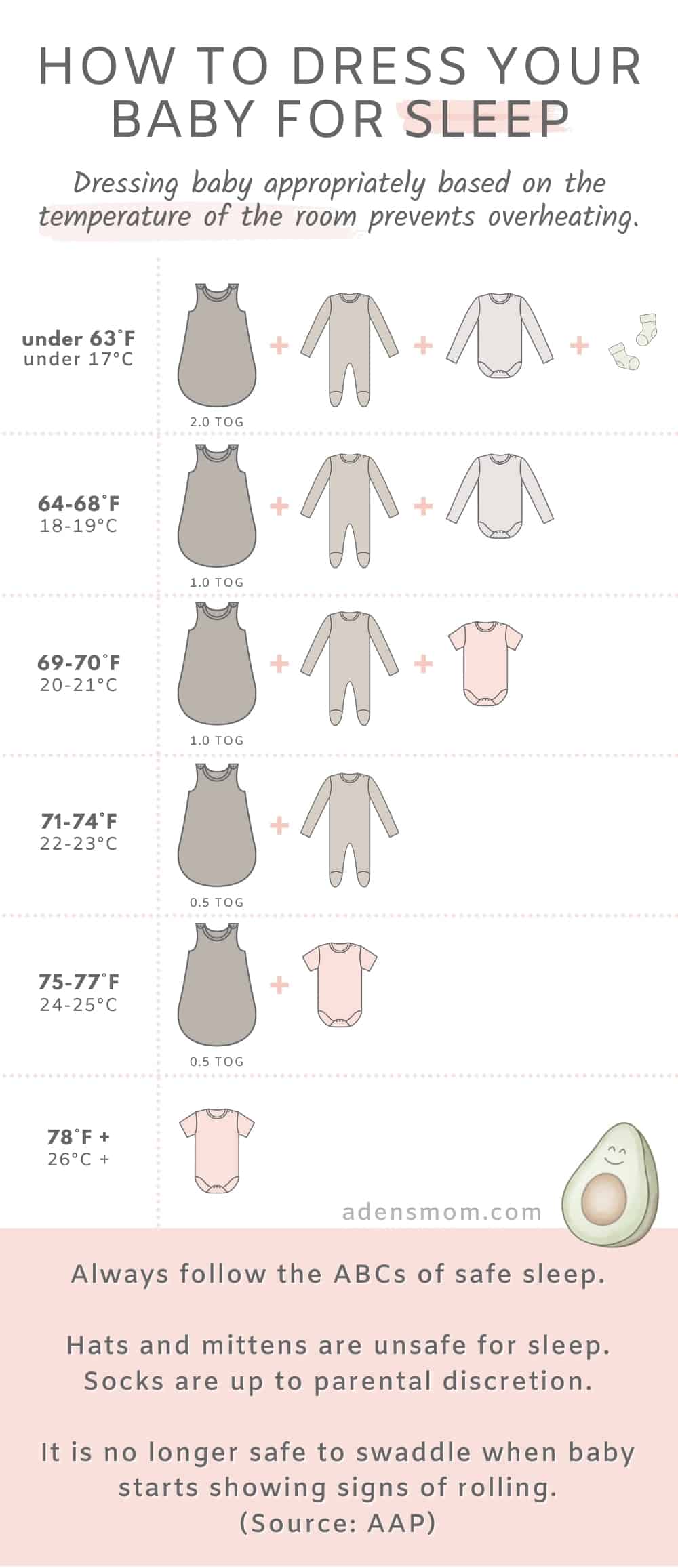
^ To *pin* this chart, click the graphic and you’ll see a red Pinterest button appear.
We’ll talk about the fine print on this infographic in just a moment.
Note that while many experts suggest an approximate range of 68-72 degrees, there is no officially recommended temperature for infant sleep.
This is because it’s relatively easy to compensate for high or low temperatures by dressing a baby appropriately for sleep.
Now for the third way to determine how warmly to dress your baby for sleep:
 Adjusting based on your baby’s core temperature
Adjusting based on your baby’s core temperature
All guidelines aside, every baby is different. It’s important to check your own baby to make sure they are neither too hot or too cold.
The best way to do this is to feel their core.
Their back or chest should be warm, but not hot, and certainly not sweaty. You’ll want to add or remove layers accordingly.
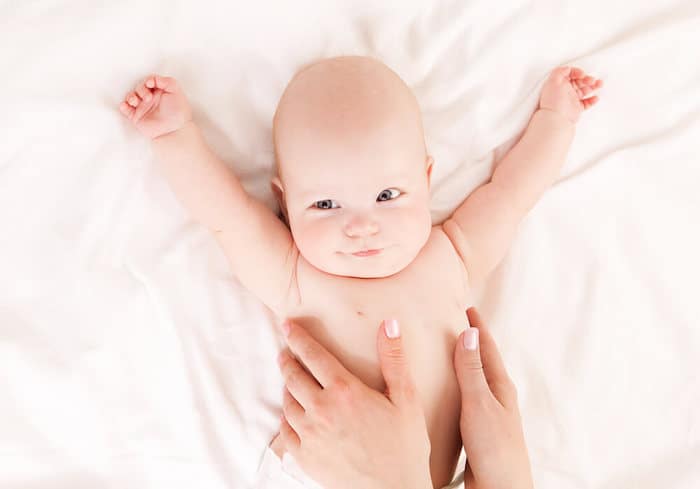
It may take some trial and error to determine which combination of sleepwear works best for keeping your baby comfortably warm at night.
Note: Don’t worry about your baby’s head or extremities being cold as these are poor indications of their actual temperature.
We’ll get into the safety of hats, mittens, and socks in just a moment.
With these three guidelines in mind, let’s talk about some of the practical details.
Is it safe to use a swaddle blanket to keep your baby warm?
Swaddling is a great way to keep a newborn warm and cozy; however, it isn’t safe for babies past a certain age and developmental stage.
The AAP advises parents to stop swaddling “as soon as their baby shows any signs of trying to roll over”, which often happens around 2 months.
Notably, many safe sleep experts strongly urge to proactively stop swaddling at 8 weeks or first signs of rolling, whichever comes first.
Why?
Because according to the AAP, if a swaddled infant rolls onto their stomach, the risk of death is high.
That leads us to sleep sacks…
How to keep a baby warm at night without swaddling
Once it’s no longer safe to swaddle, the best way to keep your baby warm at night (and during daytime naps too!) is to use a sleep sack.
A sleep sack is a wearable blanket that’s safe for all ages and stages, including newborns and toddlers. Adults too!
Sleep sacks come in different styles and thicknesses. Some are lightweight and others are heat-retaining.
The simplest way to know how warm a sleep sack is is to check the TOG rating.
You may recognize the word “TOG” from the chart above, How to Dress Your Baby for Sleep.
Let’s talk about what it means…
WHAT ARE TOG RATINGS?
Thermal Overall Grade (TOG) is the standard of measure for how much heat a garment retains.
You can find out the TOG rating of a sleep sack by:
- Checking the tags
- Visiting the company’s website
- Contacting the manufacturer
The higher the number, the warmer the sleep sack.
Here’s an overview of the different TOGs, along with sleep sack recommendations for each respective TOG…
TOG 0.5
The lightest sleep sacks are great for comfort (and sticking to a bedtime routine) when baby’s room is around 70 degrees or higher. Here’s a great option from a trusted brand.
TOG 1.0
Microfleece sleep sacks are cozy without being too thick. This is a great choice for a versatile sleep sack.
TOG 1.5
Slightly warmer than the previous, here’s a great ‘plush dot’ sleep sack made from soft minky.
TOG 2.0
If the temperature in baby’s room is 63 degrees or below, you’ll probably want a warm sleep sack. Most brands skip the 2.0 TOG (not sure why) and sell the 2.5 instead…
TOG 2.5
This is typically the warmest indoor option. If your baby’s room is extra chilly and/or you don’t plan on layering, here’s a top rated extra warm sleep sack.
TIP: If you’re not inclined to buy multiple types of sleep sacks, get an all-season one. This is the cult favorite. It’s pricey but will fit your baby for 2 years.
How to keep your baby’s hands and feet warm at night
As noted earlier, cold hands and feet aren’t a good way to gauge an infant’s temperature as babies have poor circulation.
As long as your baby is dressed in appropriate layers and their core is warm, you don’t need to worry about cold hands and feet.
“Bluish and cool hands and feet are normal on healthy infants, and the cool sensation of extremities likely do not bother baby at all”, explains Natasha Burgert, MD, FAAP.
(Source: AAP)
So, what about mittens and socks for sleep?
Are they necesssary? Are they safe?
Mittens aren’t generally recommended for infant sleep because babies need their hands to explore and self-soothe.
If you do decide to cover your baby’s hands, don’t use mittens, as they could pose a suffocation risk.
Instead, get a sleeper with mitten cuffs like this one.
Socks are somewhat of a different story.
Socks are generally considered safe if your baby’s feet are inside a swaddle or a sleep sack.
That said, if your baby tends to pull their socks off and you’re concerned about them posing a suffocation hazard, footie pajamas are your best bet.
What about keeping their little heads warm?
How to keep baby’s head warm at night
Good news: you don’t need to.
In fact, you shouldn’t.
Hats during sleep are a no-no.
Hats aren’t safe for sleep as they present risks of suffocation and overheating.
As long as your baby’s core is warm, don’t worry about their ears, nose, and cheeks feeling cold.
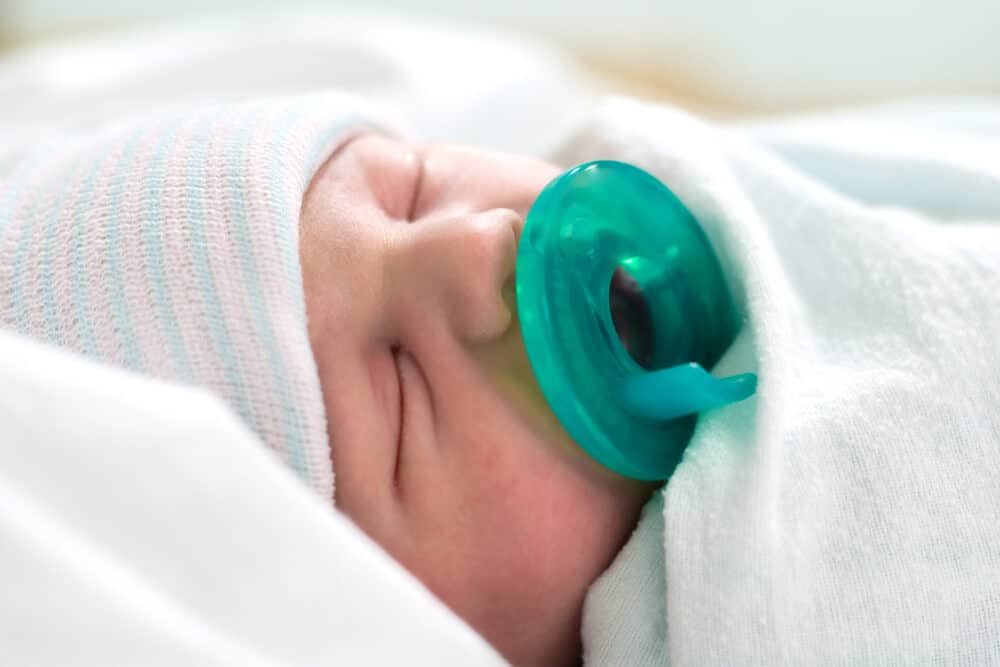
Hats are used in the hospital for brand new babies but should not be used for sleep once you’re home.
How to keep your baby from overheating during sleep
Overheating is a risk factor for SIDS/SUID so this is something to take extremely seriously.
When in doubt, dress baby in fewer layers rather than more layers. It’s better for an infant to be slightly too cold than too warm.
Here is a handy infographic for making sure your baby doesn’t get too hot:
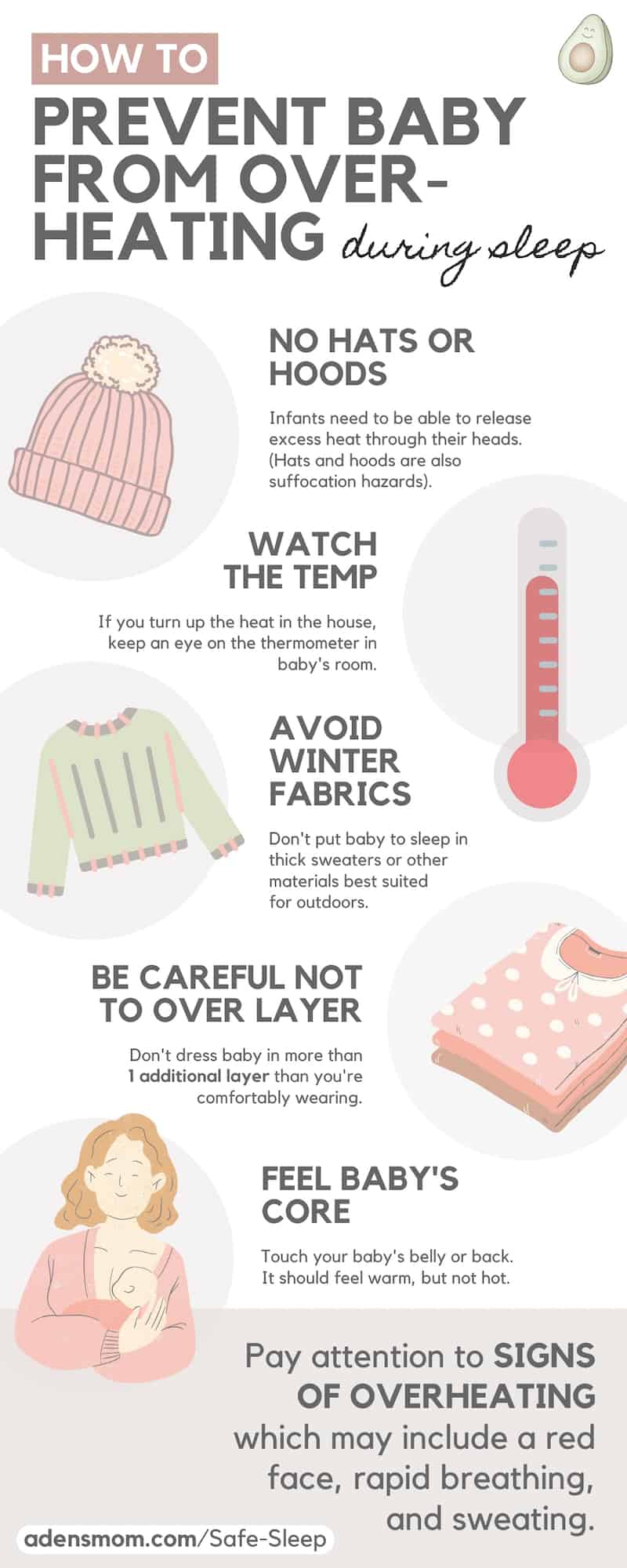
[INFOGRAPHIC TEXT]
How to Prevent Baby from Overheating During Sleep
- NO HATS OR HOODS Infants need to be able to release excess heat through their heads. (Hats are also suffocation hazards).
- WATCH THE TEMP If you turn up the heat in the house, keep an eye on the thermometer in baby’s room.
- AVOID WINTER FABRICS Don’t put baby to sleep in thick sweaters or other materials best suited for outdoors.
- BE CAREFUL NOT TO OVER LAYER Don’t dress baby in more than 1 additional layer than you’re comfortably wearing.
- FEEL BABY’S CORE Touch your baby’s belly or back. It should feel warm, but not hot.
Pay attention to signs of overheating, which may include a red face, rapid breathing, and sweating.
FAQs related to keeping a baby warm at night
How can I tell if my baby is cold at night?
Generally, you won’t have to worry about your baby getting cold during sleep as long as they’re dressed appropriately based on the temperature of the room.
Your baby will wake from sleep and cry if they get too cold. If their core feels cool, consider adding a layer.
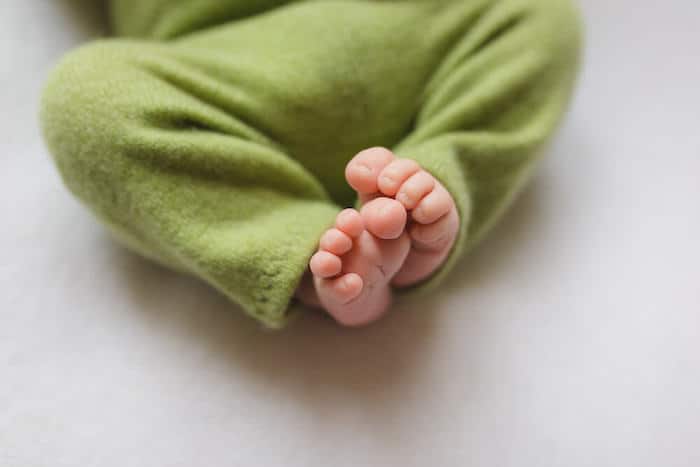
When can you safely give your baby a blanket for sleep?
Blankets in the sleep space are unsafe for babies until they are at least 12 months old, as loose bedding significantly increases the risk of sleep-related death.
After your baby turns 1, check your crib’s user manual to see whether blankets may be used.
How can we keep baby’s room warm at night without central heat?
If you don’t have central heating and the nursery temperature falls below 68 degrees, there’s nothing to worry about as long as your baby’s core is warm.
As we’ve discussed at length, this is why it’s so handy to know how to layer your baby’s sleepwear properly.
That said, if you’d like to increase the temperature in the nursery, there are 4 things you can safely do:
 Turn on a space heater in your baby’s room before bedtime.
Turn on a space heater in your baby’s room before bedtime.
Be sure to turn it off as soon as you leave the room or go to sleep.
(More on space heater safety below!)
 Use a heating pad or hot water bottle to warm your baby’s sheets before placing them in their crib or bassinet.
Use a heating pad or hot water bottle to warm your baby’s sheets before placing them in their crib or bassinet.
Touch the surface to make sure the surface isn’t too hot before you put baby down.
And of course, be sure to remove these objects from the crib!
 Pay attention to the windows:
Pay attention to the windows:
- Move baby’s crib or bassinet away from windows.
- Caulk or weatherstrip tiny gaps in the windows that are letting in cold air.
- Make sure the curtains are closed.
- Add thick curtain liners.
 If you have a ceiling fan, switch its rotation to clockwise to push warmer air down from the ceiling.
If you have a ceiling fan, switch its rotation to clockwise to push warmer air down from the ceiling.
Is it safe to use a space heater in baby’s nursery?
This is a common question from parents looking to keep their babies warm at night in winter.
The answer is that space heaters are major fire hazards.
There is no such thing as a safe space heater for a baby’s room that can be left unattended.
Not to mention, even the most advanced models can malfunction and make your baby’s room too hot, which is a SIDS risk.
Even with all the new safety features such as timers and adjustable thermostats, there are plenty of gut-wrenching horror stories from ‘loss parents’ whose space heaters malfunctioned while their babies were unattended.
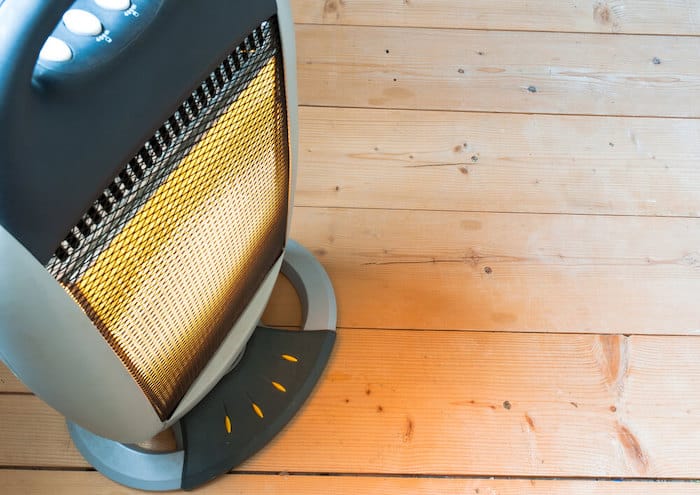
If you’d like to warm up the nursery, it’s best to turn the space heater on before bedtime while you’re in the room (and awake!); and then turn it off when you put your little one down to sleep.
The CPSC provides several critical guidelines for the use of space heaters. I’ll quickly call your attention to three of them:
- Never leave the heater on while unattended, or while sleeping.
- Do not use extension cords or power strips with space heaters.
- Make sure the heater is AT LEAST 3 feet away (in all directions) from curtains, furniture, toys, and any objects.
What about fan heaters?
The same CPSC safety guidelines apply to the popular (and expensive) Dyson Hot+Cool, which is an air purifier that also acts as a heater.
The user manual calls for “extreme caution” around children and when left unattended. The manual also warns of flammability and burns from hot parts.
How else can I make sure my baby is safe during sleep?
Any conversation about how to keep baby warm at night would be incomplete without addressing the #1 cause of infant death, SIDS/SUID.
To keep your baby safe while they sleep, always follow the ABCs of safe sleep.
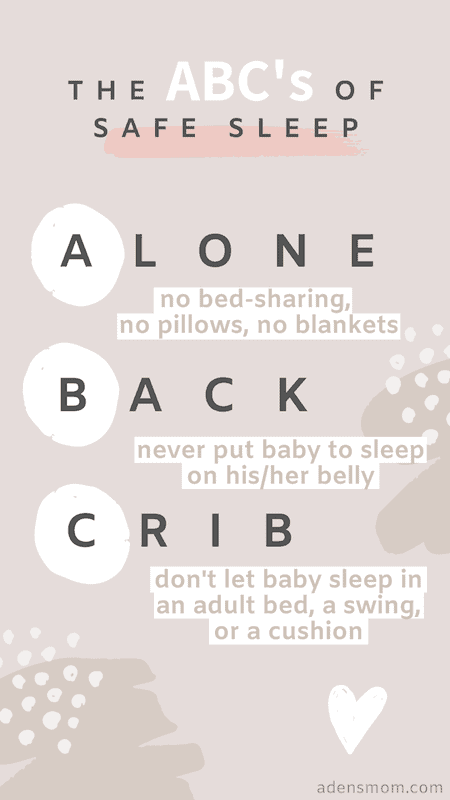
A – Alone – No people, blankets, or objects in the sleep space. Avoid unsafe baby registry items such as crib bumpers and supplemental mattresses.
B – Back – Baby should be put down to sleep on their back, never on their belly or side.
C – Crib – Only use a regulated crib, bassinet, or play yard for sleep. Keep in mind that bedside sleepers aren’t held to the same safety standards. Only use a firm mattress in the crib. Never allow your baby to sleep in a Snuggle Me (or any similar nest), a bouncer, or a Mamaroo (or any swing).
Final thoughts on safely keeping your baby warm at night without blankets
The keys to keeping your baby safely warm and cozy are to layer appropriately (without over-bundling) and to check that your baby’s core is warm but not hot.
Do not be alarmed by your baby’s cold hands and feet. Not only is this normal, but it’s a poor indication of your baby’s temperature.
Be sure to avoid blankets and any loose bedding for infants under 12 months of age.

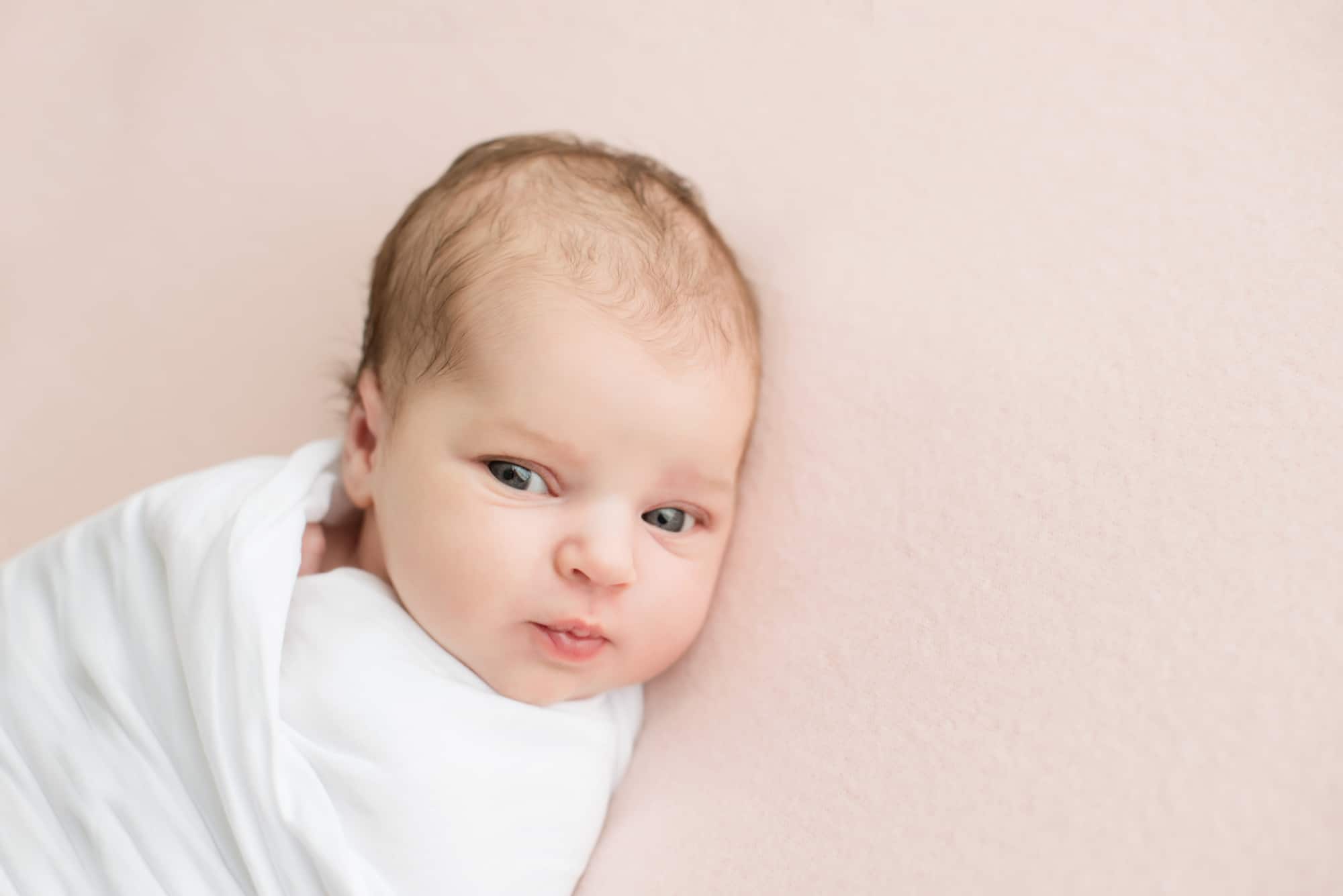


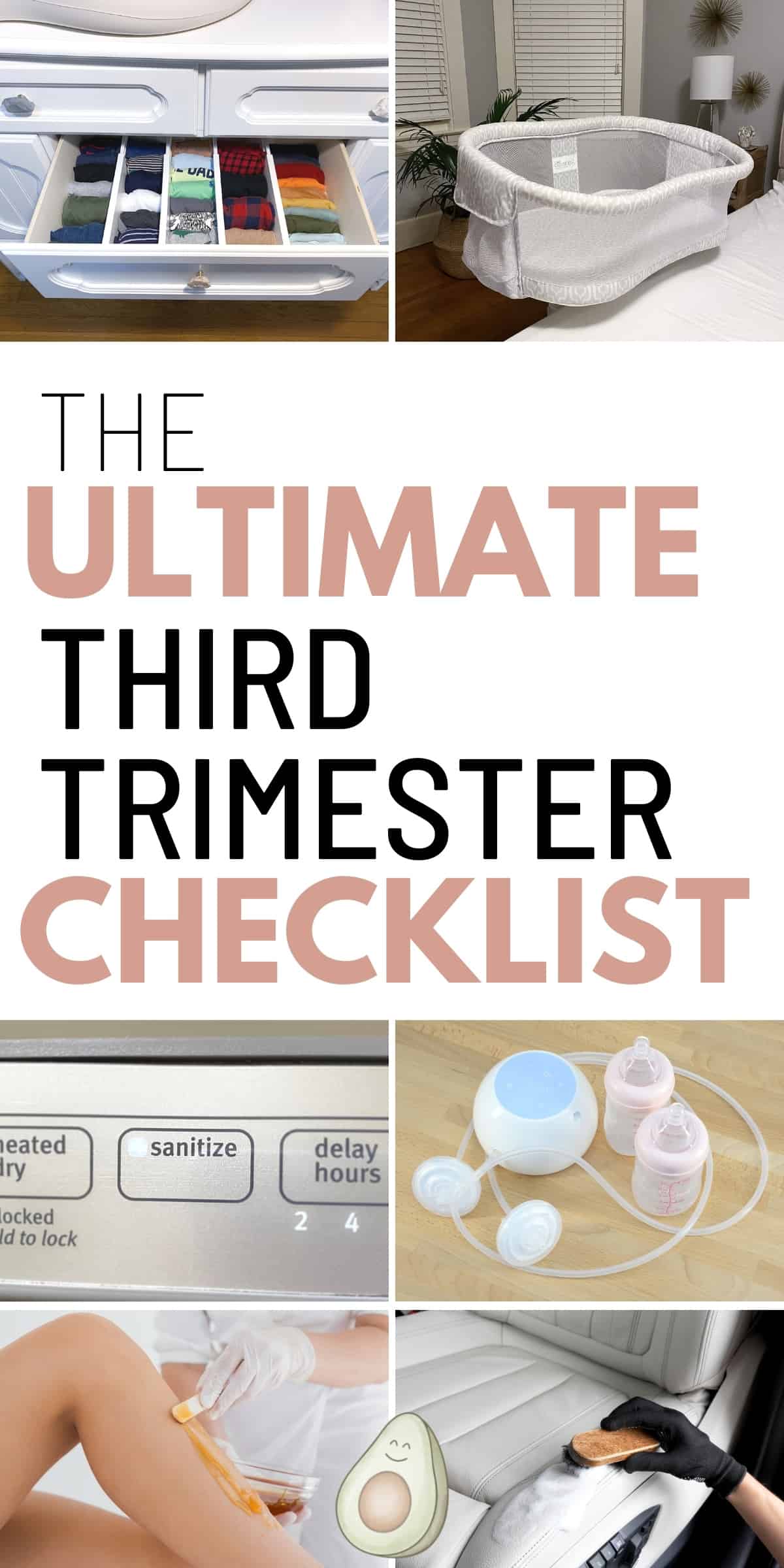
 Follow on Pinterest
Follow on Pinterest